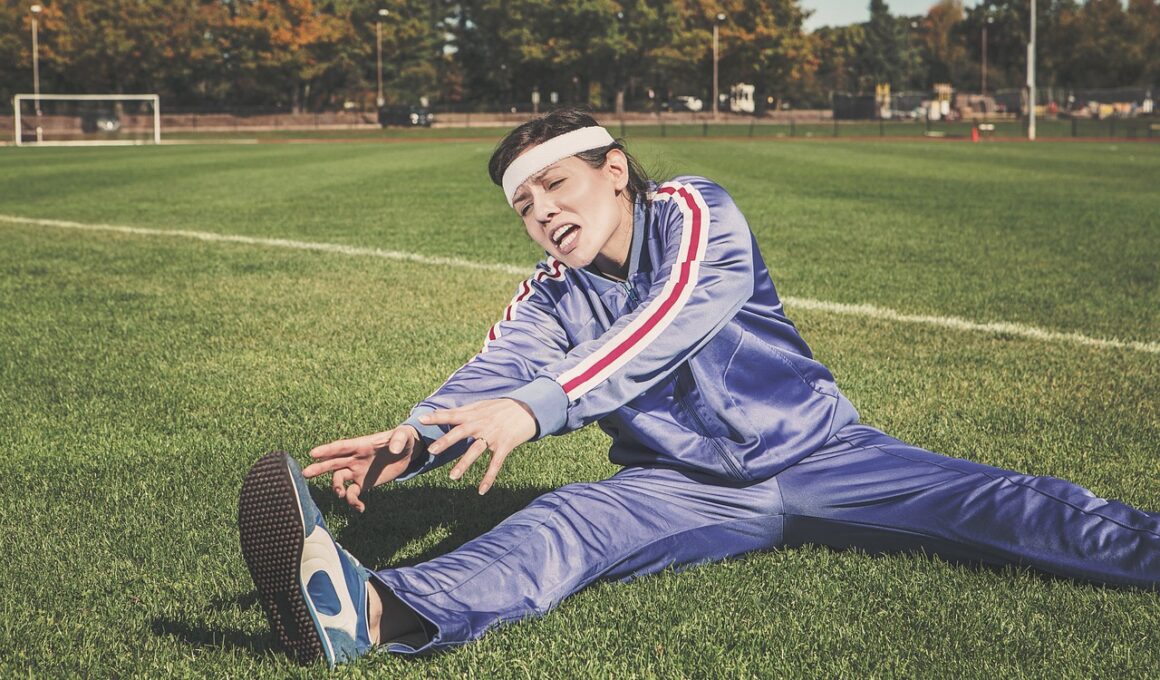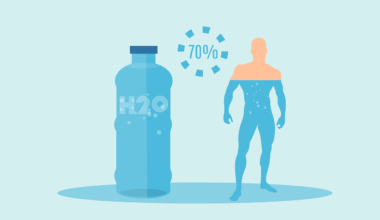Using Foam Rolling in Warm-up and Cool-down Sessions
Foam rolling is an effective technique that athletes can incorporate into their warm-up and cool-down routines to enhance performance and recovery. It involves using a foam roller to apply pressure on different muscle groups, effectively acting as a form of self-myofascial release. This practice helps to alleviate tension and tightness in muscles, improving blood circulation and flexibility. During the warm-up phase, foam rolling can help prepare the body for more strenuous activities. It not only warms up the muscles but also prepares the neuromuscular system for optimal performance. Engaging in foam rolling prior to a workout can significantly reduce the risk of injuries. Utilizing foam rollers on areas such as the calves, quads, hamstrings, and back is vital for prepping these primary muscle groups. After exercising, foam rolling serves as a cool-down technique to reduce soreness and facilitate faster recovery. By relieving muscle tightness and improving blood flow post-exercise, athletes can recover more efficiently and maintain high levels of performance. Including foam rolling in both warm-up and cool-down routines is crucial for any dedicated athlete aiming for longevity and success in their sport.
The key techniques for effective foam rolling include targeting specific muscle groups, applying adequate pressure, and incorporating breathing techniques. To start, it’s essential to identify the tight areas within your body. As you roll over these tight spots, maintain a steady pressure while breathing deeply. This combination can be particularly beneficial in the warm-up phase. It aids in increasing tissue temperature, which can enhance elasticity in the muscles. Maintaining a slow, deliberate rolling motion is crucial; spend at least 30 seconds on each area while feeling for knots. Ensure that you avoid bone and joint areas to prevent discomfort. For a balanced approach, consider a foam roller of appropriate density. Softer rollers are often better suited for beginners or those with sensitive muscles, while firmer rollers may be more effective for experienced athletes. Another essential consideration is timing; integrating foam rolling into your routine for 5-10 minutes before and after workouts can yield significant benefits. By effectively utilizing this simple tool, athletes can significantly enhance their mobility, ensuring a more productive workout session by minimizing constraints that could lead to injuries.
Importance of Foam Rolling Pre-Workout
Incorporating foam rolling into your pre-workout regimen is essential as it prepares the body for physical activity. Before any session, athletes often underestimate the significance of a proper warm-up. Foam rolling serves to activate and stimulate muscles, thereby enhancing their performance potential. Engaging in foam rolling essentially promotes blood flow and increases temperature in the targeted areas, leading to improved flexibility and range of motion. Research suggests that foam rolling can enhance muscle performance, allowing athletes to achieve optimal efficacy during their workouts. This activity can reduce perceived exertion, improve overall movement efficiency, and ultimately lead to enhanced athletic performance. Athletes need to focus on different muscle groups, such as the hip flexors and IT band, which are commonly tight. Spending sufficient time on muscle groups that may be used predominantly in the planned workout can make a significant difference. Additionally, foam rolling aids in neural activation, ensuring the nervous system is prepared for exertion. Establishing a consistent pre-workout foam rolling habit can ultimately contribute to better performance while decreasing the likelihood of muscle strains or pulls during strenuous activities.
Post-workout foam rolling is equally vital, serving as a mechanism to facilitate recovery and minimize soreness. After intense workouts, muscles can become tight and fatigued, commonly resulting in delayed onset muscle soreness (DOMS). Implementing foam rolling at this stage can help alleviate these effects by promoting improved blood circulation, which brings essential nutrients and oxygen to the muscles. Not only does foam rolling assist in flushing out lactic acid and other metabolites accumulated, but it can also aid in regaining optimal tissue elasticity. This is especially beneficial following rigorous exercises such as weightlifting, running, or high-intensity interval training. For an effective cool-down session, athletes should spend an equal amount of time rolling on each targeted area as they did in their warm-up phase, maintaining the same steady and deliberate motion. Additionally, focusing on areas that feel particularly tight or sore can yield even greater relief and expedite recovery. Investing time in foam rolling post-exercise not only prepares the body for the next workout but also plays a critical role in long-term athletic development and performance improvement.
Practical Tips for Foam Rolling
When integrating foam rolling into your routine, there are several practical tips to ensure effectiveness and safety. First, always begin your rolling sessions with warm muscles; never perform foam rolling on cold muscles as this may induce injury. A quick dynamic warm-up prior to foam rolling can adequately precondition your muscles. Aim to use proper technique as you apply pressure to your muscles. Roll slowly to identify tender areas and spend about 20-30 seconds on each tight spot. Additionally, it’s important to breathe steadily, as this can help facilitate muscle relaxation and minimize discomfort. Do not rush through the foam rolling process; quality and mindfulness take precedence over quantity. Alternative techniques such as incorporating static stretches in conjunction with foam rolling can also enhance flexibility and recovery. Furthermore, exploring various types of foam rollers – different sizes, shapes, and densities – can provide a diverse range of experiences. Lastly, make foam rolling a consistent practice either before or after workouts, and gradually increase session durations as your body becomes accustomed to this beneficial habit. Regular foam rolling can be a game-changer for athletes wishing to optimize their performance and recover quicker.
When it comes to choosing the right foam roller, the market offers various options that cater to individual needs. Basic foam rollers are lightweight and ideal for beginners, while more advanced rollers often feature ridges or bumps designed to mimic professional massages. The density of a foam roller also plays a critical role; softer options are generally more comfortable for newbies, while denser variants provide deeper tissue penetration. Look for rollers with varied textures that can offer differentiated pressure on certain muscle groups. Depending on your specific requirements and preferences, it is possible to alternate between foam varieties to target specific tight muscles effectively. Switching between using flat surfaces and those with more contouring can provide a comprehensive treatment over time. Furthermore, portable travel rollers can be convenient for outdoor training sessions. You need to prioritize your comfort and results when picking a foam roller; selecting one that truly resonates with your body’s needs ensures optimal benefits from foam rolling. To give your muscles the best treatment, align your purchase with your experience level, workout style, and personal preferences to find the best fit.
Conclusion and Final Thoughts
Integrating foam rolling into warm-up and cool-down routines is a valuable practice for enhancing athletic performance and accelerating recovery. Using foam rollers acts as a valuable tool to facilitate muscle activation pre-workout while alleviating tightness and soreness post-workout, significantly contributing to overall fitness gains. Athletes need to understand the importance of dedicating sufficient time to foam rolling, both in warming up before exercise and cooling down afterward. However, it is essential to recognize that foam rolling should be complemented with other forms of mobility training and stretching to maximize benefits. Regular use of foam rolling alongside proper strength and conditioning regimens will assist athletes in maintaining peak performance levels while mitigating injury risks. Always choose the right foam roller based on personal comfort and muscle needs. By developing the habit of foam rolling consistently, individuals can witness improved muscle function, flexibility, and recovery speeds. In summary, foam rolling is not just an additional step in the training process; it’s a fundamental practice that every athlete should embrace for improved performance and longevity in their sport.
Many elite athletes have acknowledged the positive impacts foam rolling has on their performance, integrating it into their daily training regimens. The evolving understanding of muscle recovery highlights the importance of self-care practices such as foam rolling to ensure optimal athletic performance. Just as a car requires regular maintenance, so do our bodies, especially after rigorous physical activity. Creating a foam rolling schedule, whether it aligns with workout days or recovery periods, can provide accountability and ensure that this practice becomes habitual. With advancements in technology, foam rollers are continually being innovated to meet the demands of varying athletes. Finally, keep the importance of proper hydration and nutrition in mind; both are critical companions to foam rolling. Adequate hydration supports muscle elasticity and overall recovery, complementing the benefits gained from foam rolling. Furthermore, engaging in practices such as foam rolling provides athletes with mental satisfaction as they listen to their bodies and tend to their physical well-being. Overall, foam rolling has shown to be a vital practice in any athletic training session, emphasizing the desire to perform better and care for one’s body while pursuing greatness.


